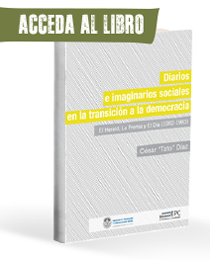Of Martin Fierro to Nuevo Orden. Pedro Juan Vignale and the magazines Poesía and Gaceta de Buenos Aires
DOI:
https://doi.org/10.24215/24690457e024Keywords:
Vignale, magazine, nacionalism, GacetaAbstract
In the article the author reconstructs Juan Pedro Vignale's trayectory and describes his participation in two publishing experiences: the magazine Poesía (1933) and the magazine Gaceta de Buenos Aires (1934). The latter represents a transition and a connection between a group of writers who vary from the 20's literary avant-garde experience to the significant political-intellectual action taken during the 1940's. Among the authors with different sensibilities and posterior paths, figures such as Armando Cascella, Ernesto Palacio, Raúl Scalabrini Ortiz, Julio Irazusta and Saúl Taborda stand out.Downloads
References
CUTOLO, V. (1966). Historiadores argentinos y americanos. Buenos Aires, Argentina: Casa Pardo.
CHÁVEZ, F. (2004). Alpargatas y libros. Diccionario de peronistas de la cultura. Tomo I. Buenos Aires, Argentina: Theoria.
GALASSO, N. (2011). Vida de Scalabrini Ortiz. Buenos Aires, Argentina: Colihue.
LAFREUR, H.; PROVENZANO, S. y ALONSO, F. (1962). Las revistas literarias argentinas (1893-1960). Buenos Aires, Argentina: Ediciones Culturales Argentinas.
LOYOLA, H. (2011). Lorca y Neruda en Buenos Aires (1933-1934). A contracorriente, ( 8). Recuperado de https://projects.ncsu.edu/project/acontracorriente/spring_11/articles/Loyola.pdf
MEGAFONO (1933). Discusión sobre Jorge Luís Borges. Tomo III, número 11.
NOÉ, J. (1926). Antología de la poesía moderna argentina (1900-1925). Buenos aires, Argentina: Nosotros.
NOÉ, J. (1931). Antología de la poesía moderna argentina (1896-1930). Buenos aires, Argentina: El Ateneo.
SOLER CAÑAS, L. (1962). Lisardo Zía. Buenos Aires, Argentina: Ediciones Culturales Argentinas.
SOLER CAÑAS, L. (1974, 16 de junio). Los retratos literarios de Lisardo Zía. Mayoría, (12), Suplemento de Letras, Artes y Ciencias.
TIEMPO, C. (1975, 26 de enero). Sentimiento de Vignale. Mayoría. Suplemento de letras, artes y ciencias, (44).
TIEMPO, C. (1980). Manos de obra. Buenos Aires, Argentina: Corregidor.
TRÍPOLI, V. (1973). Crónicas ilusas. Buenos Aires, Argentina: Plus Ultra.
VIGNALE, P. J. (1922). Alba. Breviario y canciones para los niños. Buenos Aires, Argentina: del autor.
VIGNALE, P. J. (1923). Retiro. Buenos Aires, Argentina: Impresión de Porter.
VIGNALE, P. J. (1925). Naufragios y un viaje por tierra firme. Buenos Aires, Argentina: Agencia General de Librería y Publicaciones.
VIGNALE, P. J. (1927). Sentimiento de Germana. Buenos Aires, Argentina: El Inca.
VIGNALE, P. J. (1929). Canciones para los niños olvidados. Buenos Aires, Argentina: Samet.
VIGNALE, P. J. y TIEMPO, C. (1927). Exposición de la actual poesía argentina (1922-1927). Buenos Aires, Argentina: Minerva.
Published
How to Cite
Issue
Section
License
The acceptance of an original by the journal implies the non-exclusive transfer of the patrimonial rights of the authors in favor of the publisher, who allows the reuse, after its edition (postprint), under a Creative Commons License Attribution-NonCommercial-ShareAlike 4.0 International.
According to these terms, the material can be shared (copy and redistribute in any medium or format) and adapted (remix, transform and create another work from the material), provided that a) the authorship and the original source of their publication (magazine and URL of the work) are cited, b) is not used for commercial purposes and c) the same terms of the license are maintained.
The assignment of non-exclusive rights implies that after postprint in IMPRONTAS de la historia y la comunicación authors may publish their work in any language, media and format; in that case, it is requested that they signal that the material was originally published by this journal.
Assignment also entails the authors’ authorization for the work to be collected by SEDICI, the institutional repository of the Universidad Nacional de La Plata, and for it to be indexed in the databases that the publisher thinks appropriate for enhancing the visibility of the published work and its authors.
In addition, the journal encourages authors to submit their works to other institutional and thematic repositories after their publication in IMPRONTAS de la historia y la comunicación, under the assumption that offering society unrestricted access to scientific and academic production contributes to a greater exchange in global knowledge.






.jpg)


.png)


.png)


















